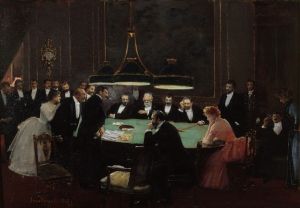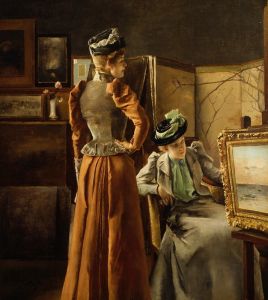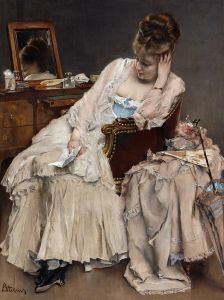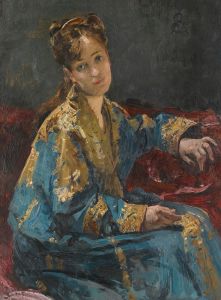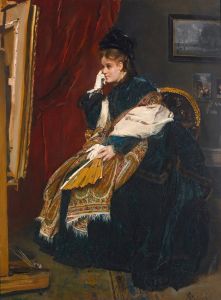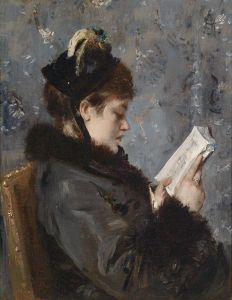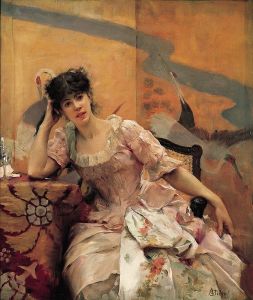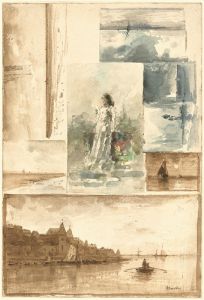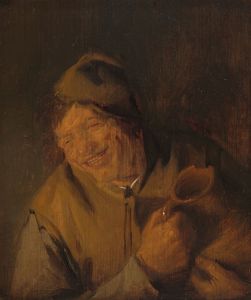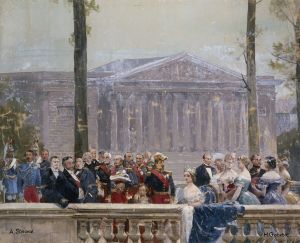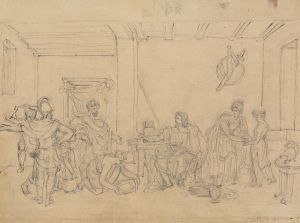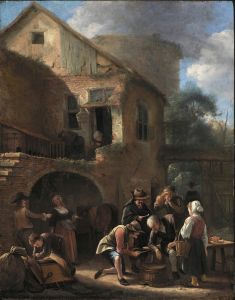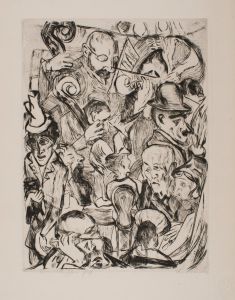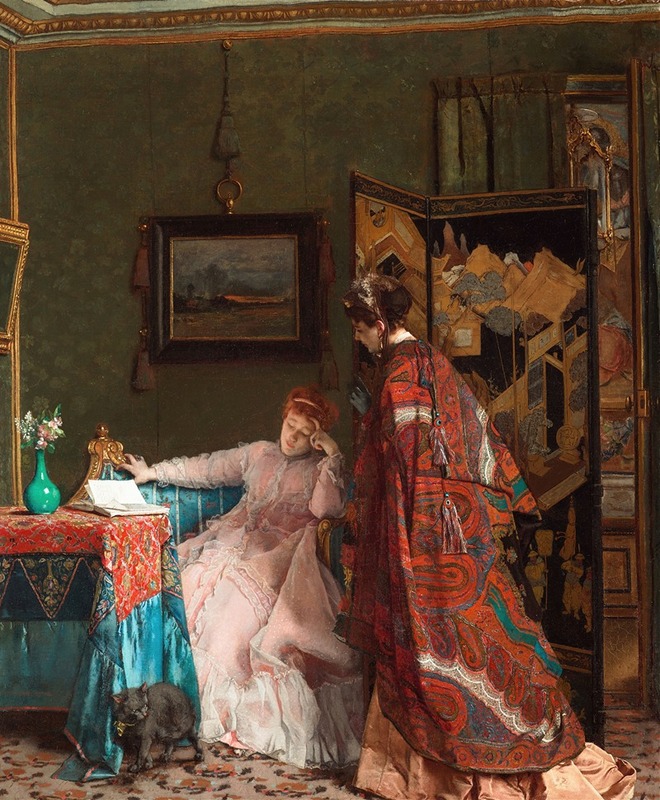
The Visit
A hand-painted replica of Alfred Stevens’s masterpiece The Visit, meticulously crafted by professional artists to capture the true essence of the original. Each piece is created with museum-quality canvas and rare mineral pigments, carefully painted by experienced artists with delicate brushstrokes and rich, layered colors to perfectly recreate the texture of the original artwork. Unlike machine-printed reproductions, this hand-painted version brings the painting to life, infused with the artist’s emotions and skill in every stroke. Whether for personal collection or home decoration, it instantly elevates the artistic atmosphere of any space.
Alfred Stevens, a Belgian painter renowned for his exquisite portrayal of women and domestic interiors, created "The Visit" in the late 19th century. This painting exemplifies Stevens' mastery in capturing the subtleties of social interaction and the elegance of contemporary fashion, which were hallmarks of his work. Born in Brussels in 1823, Stevens was a pivotal figure in the Belgian art scene and gained significant recognition in Paris, where he spent much of his career.
"The Visit" is a testament to Stevens' ability to blend realism with a refined sense of style. The painting typically depicts a domestic scene, a common theme in Stevens' oeuvre, where the focus is on the interaction between figures, often women, in a well-appointed interior. Stevens had a particular talent for rendering the textures of fabrics and the play of light on surfaces, which is evident in the detailed depiction of clothing and furnishings in "The Visit."
Stevens' work was heavily influenced by his contemporaries and the cultural milieu of his time. He was a contemporary of artists like Édouard Manet and James McNeill Whistler, and his work shares a similar interest in modern life and the depiction of bourgeois society. However, Stevens' approach was distinct in its focus on the intimate and the genteel, often highlighting the quiet moments of domestic life.
In "The Visit," Stevens employs a palette that is both rich and subtle, using color to enhance the mood and atmosphere of the scene. His use of light is particularly noteworthy, as it not only illuminates the figures and their surroundings but also contributes to the overall composition's sense of harmony and balance. The painting's composition is carefully arranged to draw the viewer's eye to the central figures, emphasizing their expressions and gestures, which convey the nuances of their interaction.
Stevens' attention to detail extends beyond the figures to the setting itself. The interiors in his paintings are often meticulously rendered, showcasing the opulence and taste of the era. This attention to detail serves to situate the figures within a specific social context, offering insights into the lifestyles and values of the time.
Throughout his career, Stevens received numerous accolades and was celebrated for his contribution to the art world. His works were exhibited widely, and he was awarded several honors, including the Legion of Honor in France. "The Visit," like many of his paintings, reflects his deep understanding of both the artistic and social currents of his time.
Today, Alfred Stevens' paintings are held in high regard and can be found in major museums and collections around the world. "The Visit" continues to be appreciated for its artistic merit and its ability to capture the essence of a bygone era with grace and precision. Through his work, Stevens offers a window into the past, allowing contemporary audiences to appreciate the beauty and complexity of 19th-century life.





